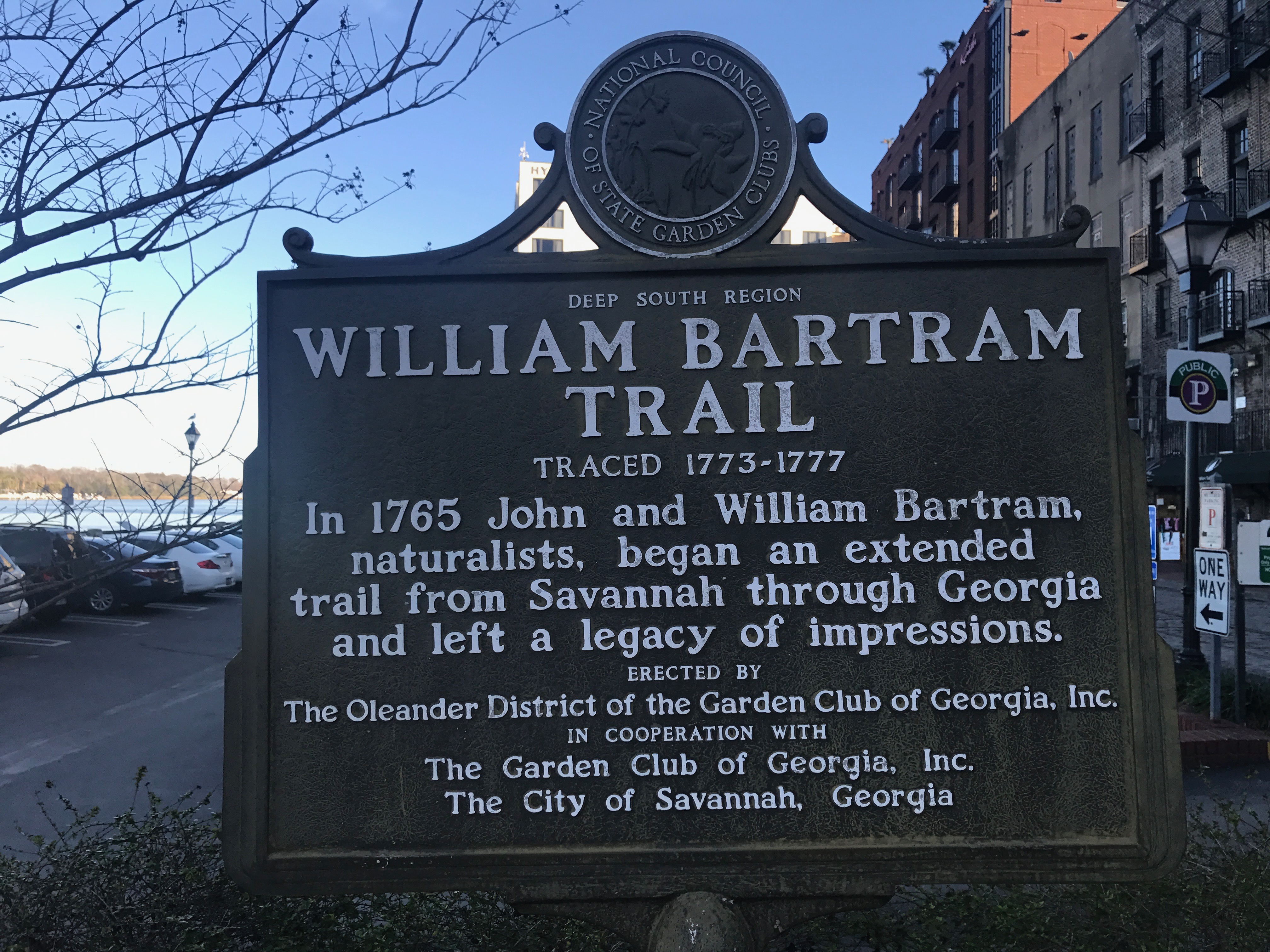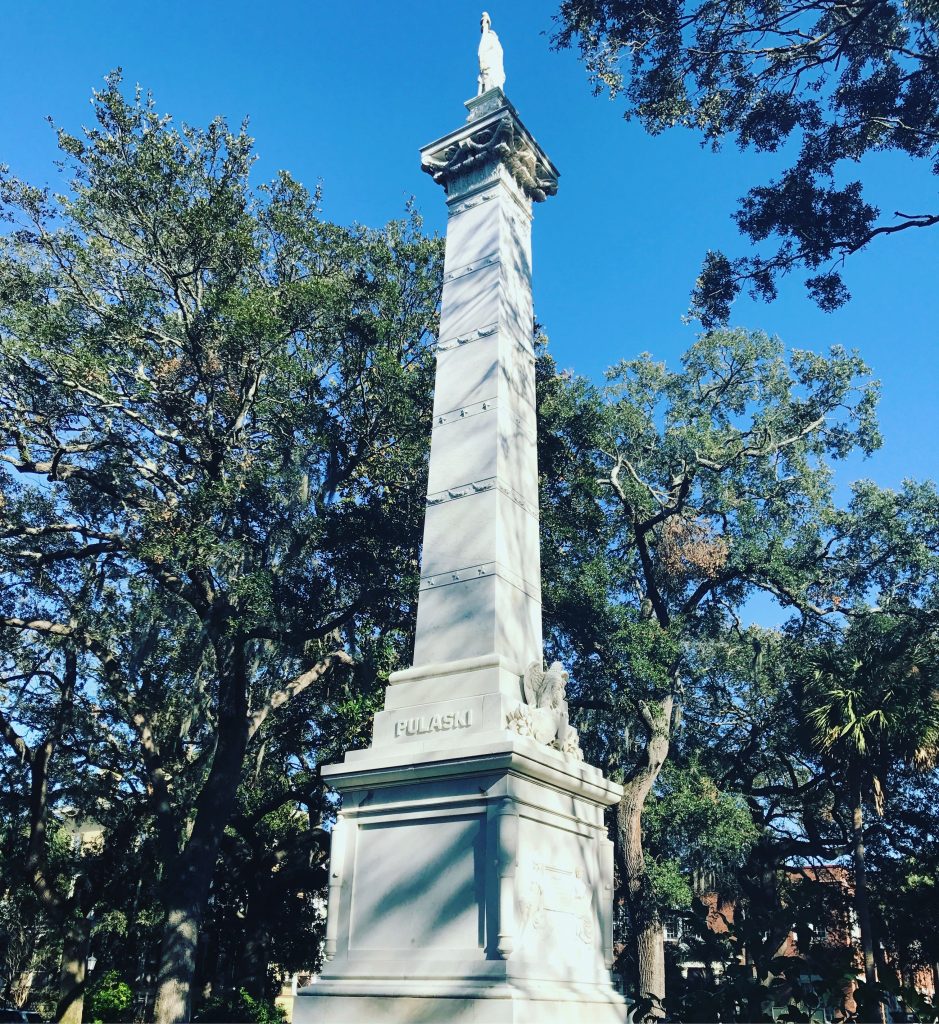
The genesis of Savannah was of a utopian idea.
James Oglethorpe, a British statesman, was appalled at the conditions of debtors’ prisons in 18th century England. His concern was compounded by the fact that once defaulters were released they often had no means of support.
To solve this, he proposed a settlement in the New World to provide a fresh start for the destitute.

James Oglethorpe Statue
The king did not care much for the problem.
However, a different idea became popular with the king; it was believed settling the area in present-day Georgia would serve as a military buffer between the important British city of Charleston and the Spanish who were colonizing Florida.
With this new defensive aim in mind, Oglethorpe was sent in 1733 with a group of skilled settlers to ensure the successful foundation of the new colony of Georgia.
Oglethorpe chose Yamacraw Bluff, a steep bank on the Savannah River inhabited by Yamacraw Indians, to construct what would be the first city in Georgia: Savannah.
In contrast to other early arrivals of Westerners, the Yamacraw Chief was responsive to the arrival of Europeans.
“There is plenty of room here for both red men and white men. Bring your people on to our woods. As soon as they get settled, we will call to welcome them,” is how the tale describes Chief Tomochichi’s warm greeting.
Some historians even credit him as co-founder of Savannah.

Chief Tomochichi’s Monument
This positive relationship was crucial to the town’s success, as the new settlers would need assistance in learning what they could cultivate for food and other aspects of survival in the New World.
One pioneer wrote, “The Winters were so cold that the orange trees died and the summers were so hot that grapes blistered before they could ripen.”
Early Savannah remained idealistic with prohibitions on slaves and rum.
In addition, lawyers and Catholics were also banned. People were expected to defend themselves in court and the distrust of Catholics arose from suspicion of the Spanish in Florida who happened to practice Catholicism.
Oglethorpe arranged the town in a grid-like pattern and uniquely made heavy use of large squares throughout. These squares provided shared common ground, space for gardens, and facilitated defense.
For example, it was much easier to assemble militia in a square than in a narrow street or on the edge of town. Also, it was more manageable to direct and safeguard livestock.
Savannah is the largest city to retain this distinctive layout with 22 squares historically preserved.
The region was also known for its natural scenery.
“What a beautiful display of vegetation is here before me! Seemingly unlimited in extent and variety: how the dew-drops twinkle and play upon the sight, trembling on the tips of the lucid, green savanna, sparkling as the gem that flames on the turban of the eastern prince; see the pearly tears rolling off the buds of the expanding Granadilla; behold the azure fields of cerulean Ixea!” wrote of Naturalist William Bartram as he journeyed through the surrounding expanse.

Historic Marker Honoring Naturalist William Bartram
Savannah’s location on the Georgia coast made it a vital port city during Colonial times, as it facilitated not only control over the South but also trade traffic to the Caribbean. For a time the town was even considered the “Gibraltar of the Gulf Passage.”
The British, who took over Savannah early during the American Revolutionary War, recognized this strategic position.
“I clearly saw that if this city then fell, America was lost,” wrote Sir James Wright, the Royal Governor of Georgia.
What began as a conflict between a king and his colonies eventually developed into an international conflict.
The Siege of Savannah in 1779 resulted in 3,200 British soldiers successfully repelling a force of over 5,000 troops from the French Army (with a significant Haitian regiment) and American Continental Troops comprised of Austrians, Germans, Poles, Scots, Swiss, and Americans of English, French, and Irish heritage
The French and American retreat was described as “rapid beyond conception.”
“There was hardly a house which had not been shot through and some of them were almost destroyed,” described one town resident as the smoke settled.
The 55-minute siege marked the first time the French had committed troops on behalf the American cause. Over 800 soldiers perished, including many French officers as they vied for the honor to be the first to lead the attacks against the British.
Polish Nobleman Casimir Pulaski, one of the Fathers of American Calvary and Honorary Citizen of the United States, died two days later as a result of wounds suffered during the siege.
Monument To Pulaski
Pulaski’s monument is topped with a Statue of Liberty embracing the banner of Stars and Stripes in one hand and a Laurel Wreath in the other. The designer wrote, “The love of liberty brought Pulaski to America; for love of liberty he fought, and for liberty he lost his life. Thus, I thought that Liberty should crown his monument, and share with him the homage of the free.”
“The best blood of Europe reddened the soil of Savannah,” wrote one researcher describing the totality of the causalities incurred.
Historians consider this event one of bloodiest hours of the war and believe this victory extended the length of the war because it renewed British confidence and maintained a strong foothold for British to organize around in the South.
Fortunately, war would be less bloody in Savannah during the American Civil War.
Local lore claims Union General William Tecumseh Sherman was so overcome by the town’s beauty upon his arrival he declined to order its complete destruction so he could offer it instead as a present to his commander and chief.
“I beg to present you as a Christmas gift the city of Savannah with 150 heavy guns and plenty of ammunition and also about 25,000 bales of cotton,” was what he wrote to President Abraham Lincoln.
The city’s immediate, unconditional surrender and lack of Confederate resistance was the real reason Savannah was spared.

Green-Meldrim House Where General Sherman Made His Headquarters In Savannah

The Town Cemetery — Some of Sherman’s Troops camped here resulting in vandalism of the tombstones; after the war many grave sites were forgotten so the town simply mounted them on the back wall.
Today, Savannah has retained a distinguishing charm that has made it ideal to be the backdrop for several movies such as Forrest Gump, Something to Talk About, Midnight in the Garden of Good and Evil, and The Conspirator.
Also, Juliette Gordon Low, a Savannah local founded the Girl Scouts of America here.

// Oliver – Day 29 – Savannah


